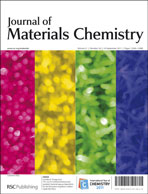This study systematically investigated the influence of (photo-assistance) light exposure on lead zirconate titanate (Pb(ZrxTi1−x)O3, PZT) thin films, with variations of compositions, temperatures and wavelengths of irradiation light. The PZT films were obtained by sol–gel photo-assisted annealing at 150 °C in air atmosphere on Pt coated silicon substrates. They were then baked at 350 °C, and crystallized at 650 °C in air. The physical property analysis results revealed that the UV-photo-assistance affected the microstructure and the texture of the PZT. Furthermore, the influences were strongly dependent on both the film compositions and the wavelengths of the light source. The Fourier transform infrared (FT-IR) spectrometry results showed that the UV-light enhanced the decomposition process within the solution layer and dissociated the organic species during drying at 150 °C, and the observed structural variation of the PZT films was closely associated with the residual amount of their organics after photo-assisted annealing. The UV-absorption spectra of PZT precursors indicated that the enhancement of the organic decomposition was dependent on their photo-sensitivities, which were determined by the compositions and temperatures. Additionally, the analyses of various photo-assistances conducted on the sol–gel solution provided specific information about the interaction between the photo-lights and the solution precursors. The results suggest a preferential decomposition of Ti oligomers during the photochemical annealing process, which is considered as the most important mechanism for structural variations in the photo-assisted PZT film. This study proposed that PZT has a novel texture development mechanism under UV radiation, namely, the photochemical-induced-self-seeding effect. Based on this mechanism, it has become feasible to manipulate the texture of the multi-component materials through the photochemical deposition process.

You have access to this article
 Please wait while we load your content...
Something went wrong. Try again?
Please wait while we load your content...
Something went wrong. Try again?


 Please wait while we load your content...
Please wait while we load your content...